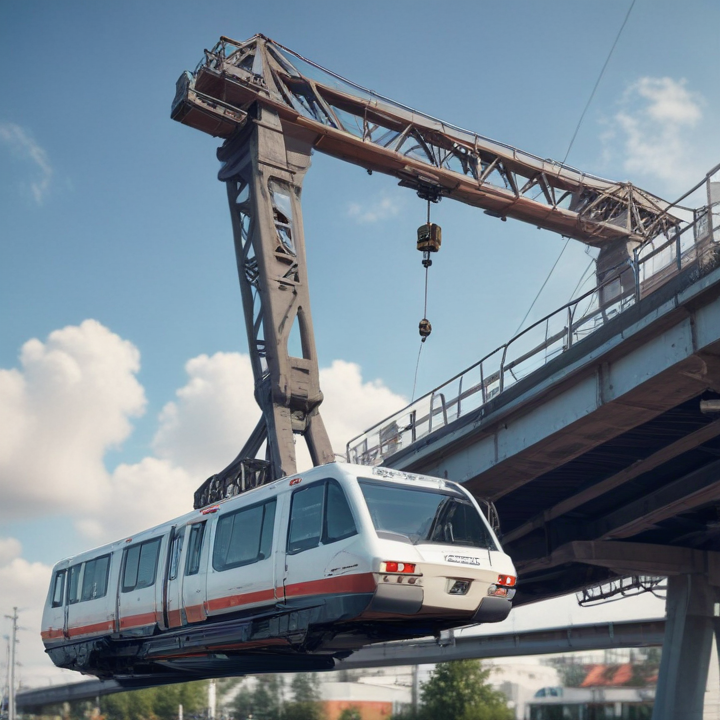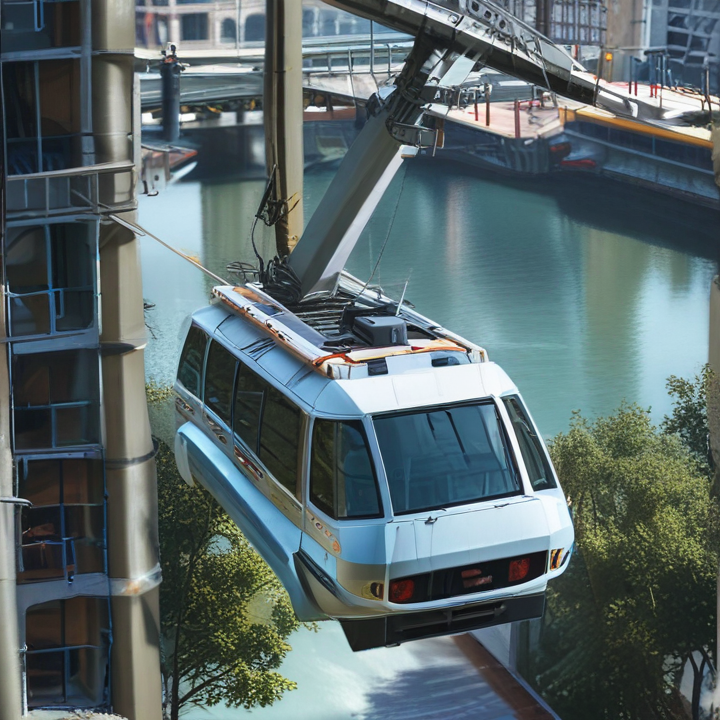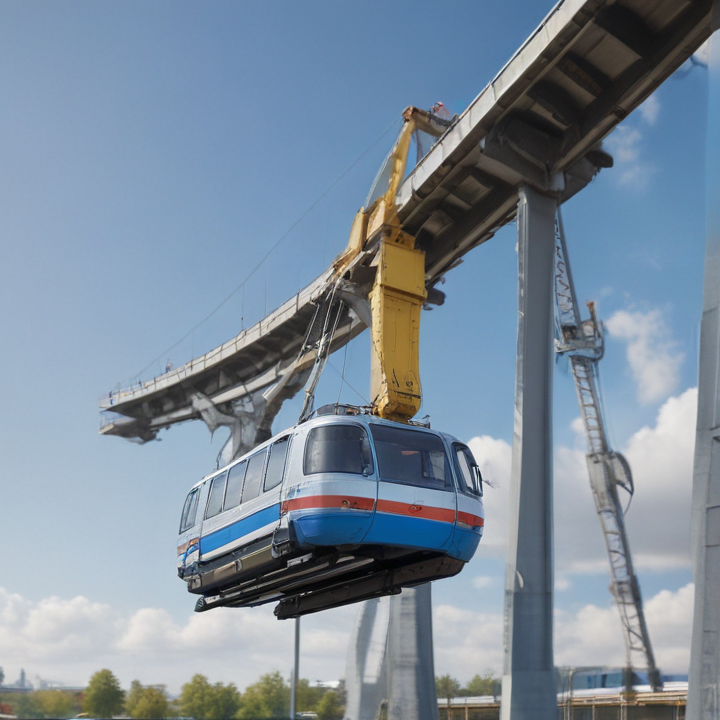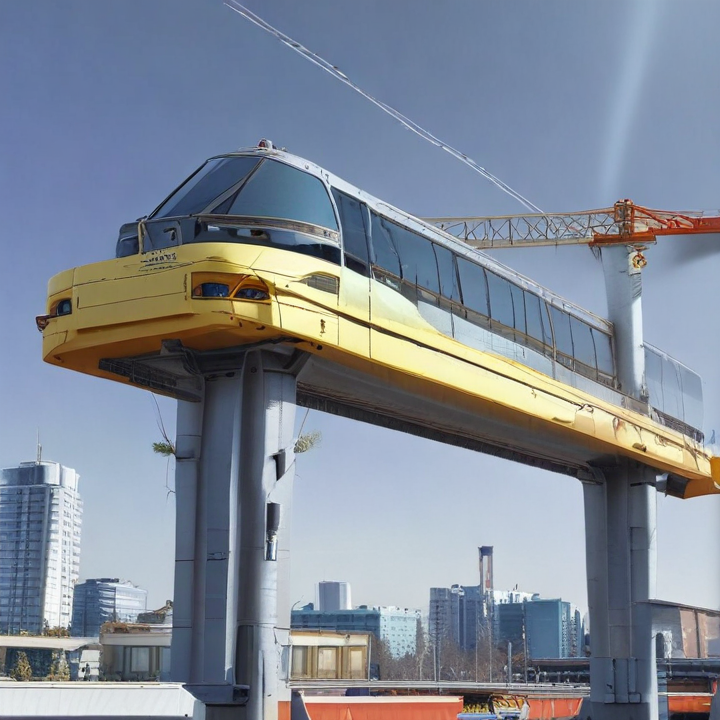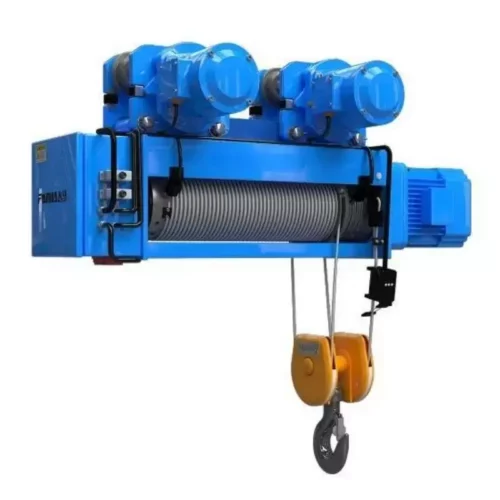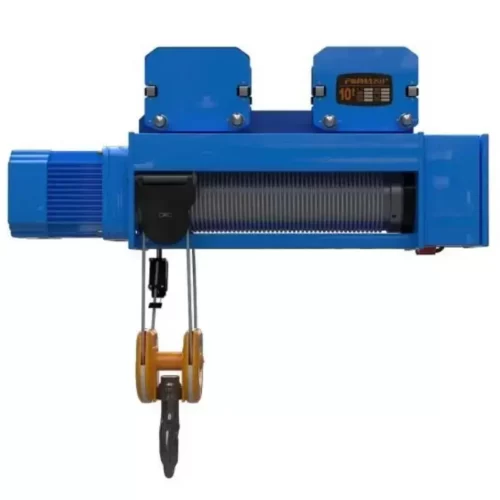monorail crane Safety Certifications
Monorail cranes play a crucial role in various industries, offering efficient material handling solutions. Ensuring their safe operation necessitates adherence to strict safety standards and certifications. The following are key safety certifications relevant to monorail cranes:
1. OSHA (Occupational Safety and Health Administration):
– OSHA sets comprehensive standards for occupational safety, including crane operation. Complying with OSHA regulations minimizes workplace accidents and fosters a safe working environment.
2. ASME B30 Standards:
– The American Society of Mechanical Engineers (ASME) B30 standards cover safety guidelines for cableways, cranes, derricks, hoists, hooks, jacks, and slings. ASME B30.11 specifically addresses the safety requirements for monorail systems and underhung cranes.
3. ISO (International Organization for Standardization):
– ISO 9001 and ISO 14001 certifications ensure that a company’s quality management systems and environmental management systems meet international standards. For crane safety, ISO 9927 focuses on maintenance, inspection, and safe use.
4. CMAA (Crane Manufacturers Association of America):
– The CMAA provides specifications and guidelines for crane design, installation, and operation. CMAA Specification No. 74 is particularly relevant to monorail cranes, ensuring they meet rigorous safety and performance criteria.
5. FEM (Fédération Européenne de la Manutention):
– FEM 9.341 and FEM 9.511 provide European standards for monorail systems and crane runway beams, emphasizing safety and reliability.
6. Lifting Equipment Engineers Association (LEEA):
– LEEA certification signifies that a company adheres to global best practices in lifting equipment design, manufacturing, and maintenance.
Adherence to these certifications and standards ensures that monorail cranes operate safely, reducing risks and promoting efficiency in material handling tasks. Regular inspections, maintenance, and employee training are equally critical components in sustaining the safety and longevity of monorail crane systems.
List Reference Technical Parameters of “monorail crane”
A monorail crane is a type of overhead lifting device commonly used in manufacturing and assembly operations for transporting loads along a defined path. Here are the key technical parameters to consider:
1. Load Capacity:
– The maximum weight the crane can lift. Typical ranges vary from 1 ton to over 10 tons.
2. Span:
– The distance between the supports of the crane system. This determines the coverage area of the monorail.
3. Lift Height:
– Maximum vertical distance that the hoist can move the load.
4. Speed:
– Hoist Speed: Vertical lifting speed of the hoist, generally expressed in meters per minute (m/min).
– Travel Speed: Horizontal speed at which the hoist or pulley system moves, also shown in m/min.
5. Hoist Type:
– Variations include electric, manual, pneumatic, or hydraulic hoists, dependent on the application and power availability.
6. Travel Path:
– Predetermined paths including straight lines, curves, or complex tracks to navigate the working area efficiently.
7. Control Mechanism:
– Options include manual push-pull mechanisms or motorized controls with pendant, wireless remote, or fixed control stations.
8. Power Supply:
– Voltage and phase requirements for motorized units, typically industrial standards like 230V/3-phase or 460V/3-phase.
9. Duty Classification:
– Specifies the frequency of use and the crane’s operational environment, often following standards like FEM (Fédération Européenne de la Manutention) or CMAA (Crane Manufacturers Association of America).
10. Structure Type:
– Comprised of I-beams, enclosed tracks, or patented tracks, affecting the load handling and installation complexity.
11. Installation Configuration:
– Ceiling-mounted, floor-supported, or wall-mounted, depending on user needs and existing structure.
12. Safety Features:
– Inclusion of limit switches, overload protection, emergency stop mechanisms, and related safety protocols.
By considering these technical parameters, users can select and configure a monorail crane system tailored to their specific operational requirements.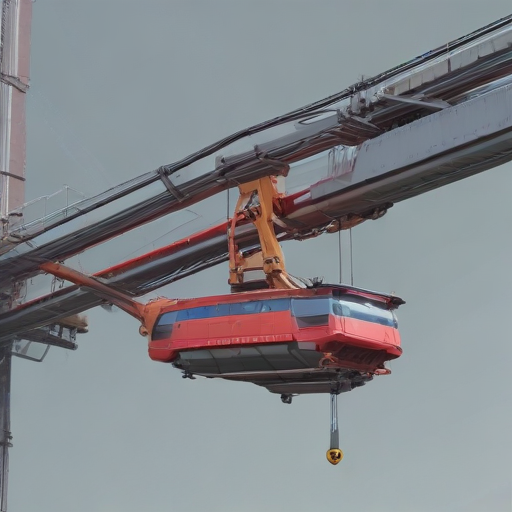
List Product features of “monorail crane”
Sure, here are the key product features of a monorail crane summarized succinctly:
1. Single Beam Construction: Utilizes a single beam, often an I-beam, for overhead load transport.
2. Versatile Applications: Ideal for assembly lines, warehouses, and production facilities requiring linear or curvilinear paths.
3. Compact Design: Requires minimal space with low headroom, maximizing vertical lift height.
4. High Load Capacity: Designed to handle a wide range of loads, from light to extremely heavy weights.
5. Customizable Track Layout: Tracks can be straight, curved, or complex to fit specific workspace needs.
6. Electric or Manual Operation: Available with electric hoists for automation or manual hoists for cost-effective solutions.
7. Safety Features: Typically includes overload protection, emergency stops, and limit switches.
8. Smooth and Precise Movement: Ensures accurate positioning and gentle handling of loads.
9. Durable Construction: Made from high-quality materials for longevity and reliable performance.
10. Ease of Maintenance: Designed for minimal maintenance with easy access to components.
11. Efficient Space Utilization: Frees up floor space, enhancing work area efficiency.
12. Variety of Hoisting Options: Compatible with different types of hoists, such as wire rope, chain, or magnet lifts.
13. Scalable Solutions: Easily integrated into larger material handling systems and expandable as needed.
14. Cost-Efficiency: Provides a cost-effective lifting solution compared to more complex crane systems.
Each feature ensures that a monorail crane offers practical and efficient material handling solutions tailored to specific operational requirements.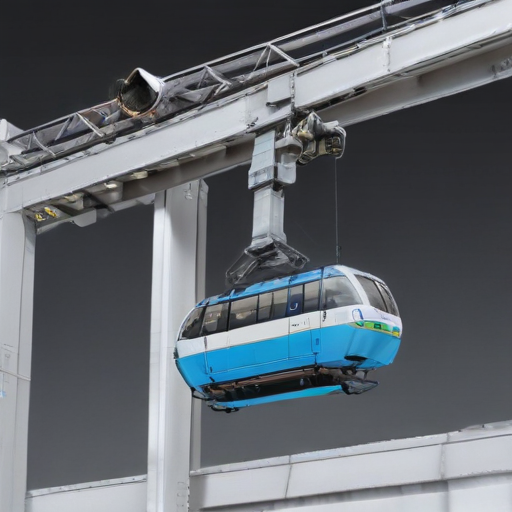
List Various Types of “monorail crane”
Monorail cranes are an efficient material handling solution, designed for applications that require linear or curvilinear overhead lifting. They are particularly suitable for areas with limited space or where complex pathways are navigated. Here are various types of monorail cranes:
1. Single Girder Monorail Crane:
– Description: Utilizes a single girder mounted on the track, supporting the hoist and trolley.
– Application: Ideal for lighter loads and simpler lifting tasks.
2. Double Girder Monorail Crane:
– Description: Features two girders for added stability and support.
– Application: Suitable for heavier loads and more demanding applications.
3. Curved Track Monorail Crane:
– Description: Designed with curved tracks to navigate around obstacles or follow complex paths.
– Application: Used in manufacturing settings with intricate production lines.
4. Enclosed Track Monorail Crane:
– Description: Features a fully enclosed track that protects the trolley and hoist from debris.
– Application: Common in environments where cleanliness and protection from contaminants are necessary, like pharmaceutical or food processing industries.
5. Modular Monorail Crane:
– Description: Built with modular components which can be easily configured or expanded.
– Application: Flexible setups are ideal for evolving production environments.
6. Telescopic Monorail Crane:
– Description: Equipped with a telescopic beam allowing for adjustable span length.
– Application: Used in scenarios requiring reach adjustments, like varying aisle spacing in warehouses.
7. Motorized Monorail Crane:
– Description: Operated electronically for automated load movement.
– Application: Best for repetitive tasks requiring efficiency and precision.
8. Manual Monorail Crane:
– Description: Operated manually via push/pull.
– Application: Suitable for small-scale operations with limited manual lifting needs.
Each type offers distinct advantages, making monorail cranes versatile for various industrial applications, from simple to complex lifting tasks.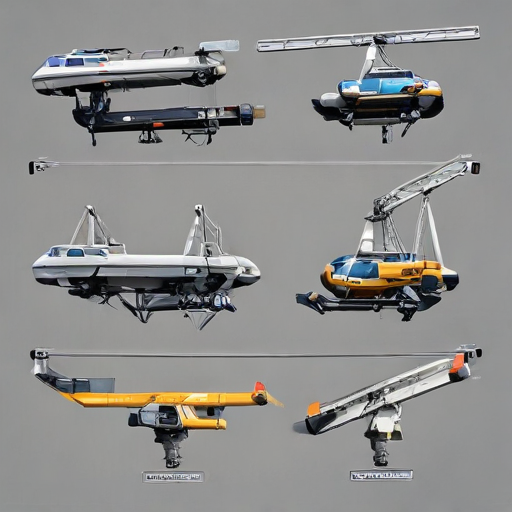
List Application of “monorail crane”
Monorail cranes are versatile material handling systems used in various industries for efficient and safe movement of loads. Here are key applications:
1. Manufacturing:
– Assembly Lines: Facilitate movement of components across different stages.
– Production Floors: Transport heavy materials between workstations.
2. Warehousing and Distribution:
– Inventory Management: Assist in organizing and retrieving stock.
– Loading and Unloading: Streamline processes at docking stations.
3. Automotive Industry:
– Car Assembly: Move car parts between assembly lines.
– Maintenance: Aid in handling heavy machinery for repairs.
4. Aircraft Industry:
– Component Handling: Transport large parts like wings and engines.
– Maintenance and Overhaul: Support lifting of heavy aircraft components.
5. Metalworking:
– Material Transport: Shift raw materials to machines.
– Finished Goods Handling: Move finished products to storage or shipping areas.
6. Mining and Foundries:
– Ore Handling: Transport raw materials for processing.
– Finished Metal Transport: Move cast metal items to further processing areas.
7. Pharmaceutical and Chemical Industries:
– Safe Material Handling: Move sensitive and hazardous materials securely.
– Production Support: Transport heavy and bulk containers in controlled environments.
8. Utilities & Power Plants:
– Equipment Maintenance: Handle heavy components like turbines.
– Material Supply: Move bulk materials required for power generation.
9. Food and Beverage Industry:
– Ingredient Handling: Transport heavy containers or vats.
– Production Line Support: Move products through various stages of production.
10. Construction:
– Material Handling: Lift and move construction materials like steel beams and precast panels.
– Site Maintenance: Assist in the handling of equipment and materials on construction sites.
In summary, monorail cranes are essential across industries for their ability to enhance productivity, improve safety, and streamline processes involving the movement of heavy or bulky items.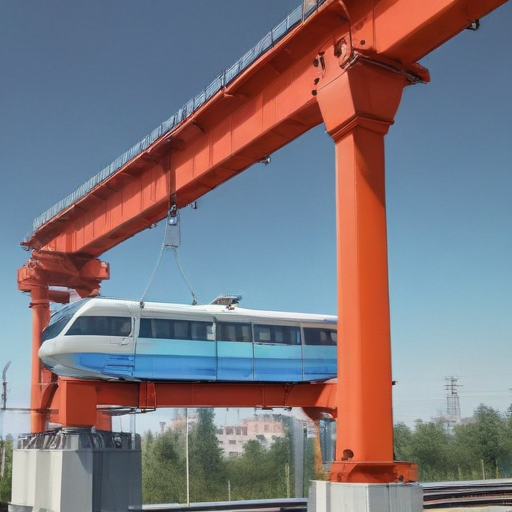
List Buyer Types of “monorail crane”
Monorail cranes are versatile lifting systems used across various industries for material handling and transportation along a single axis. Here’s an overview of the primary buyer types for monorail cranes:
1. Manufacturing Plants:
– Automotive: For moving heavy auto parts and assembling components.
– Aerospace: Essential for transporting large aircraft parts and precision tools.
– Electronics: Used for delicate handling of components in production lines.
2. Warehousing and Distribution Centers:
– Facilitate efficient handling of goods, from loading and unloading trucks to organizing inventory.
3. Construction Companies:
– Beneficial for on-site material handling, lifting heavy construction materials, and assisting in building assembly processes.
4. Mining and Mineral Processing Industries:
– Essential for transporting mined materials, maintaining equipment, and improving the efficiency of mineral processing operations.
5. Chemical and Pharmaceutical Plants:
– Used for safely handling hazardous materials and supporting the precise transport of chemicals and pharmaceutical products.
6. Utilities and Energy Sector:
– Integral in power plants, oil and gas facilities for maintaining equipment, and handling heavy components.
7. Food and Beverage Processing:
– Applied in the handling of bulk goods and ingredients, enhancing production line efficiency.
8. Shipyards and Marine Industry:
– Crucial for shipbuilding and maintenance, enabling the movement of large components and achieving complex assembly tasks.
9. Service and Maintenance Providers:
– Utilize monorail cranes for the repair, maintenance, and installation tasks across various industries, boosting operational efficiency.
10. Custom Equipment Manufacturers:
– Companies that design and build custom machinery often incorporate monorail cranes into their systems for enhanced material handling capabilities.
Each of these sectors relies on monorail cranes to improve productivity, ensure safety, and streamline operations, making them a critical investment for handling heavy or complex materials efficiently.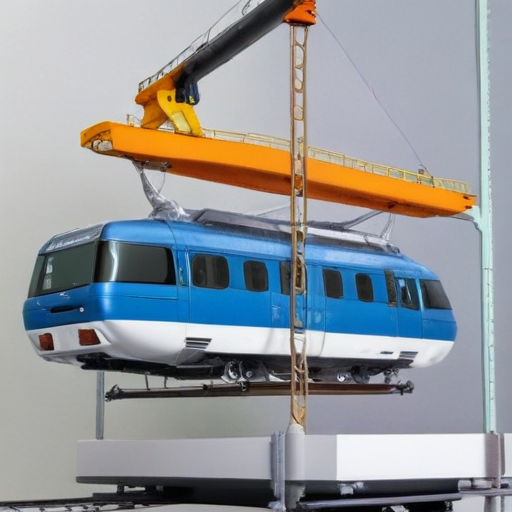
List “monorail crane” Project Types for Different Industries
Monorail cranes are versatile lifting systems used across various industries for efficient material handling. Below are different project types for various sectors:
1. Manufacturing:
– Production Line Support: Integrates into assembly lines for lifting and transporting parts or raw materials.
– Tool and Die Handling: Manages heavy tooling and dies, improving safety and efficiency.
– Workstation Ergonomics: Reduces worker strain by automating the movement of components.
2. Automotive:
– Engine Assembly: Facilitates handling and positioning of engines and large components.
– Body Shop Operations: Supports welding and assembly processes by moving vehicle bodies and parts.
– Maintenance Bays: Assists in the lifting of components for repair and maintenance activities.
3. Pharmaceutical and Chemical:
– Cleanroom Material Handling: Ensures contamination-free transport of sensitive products.
– Batch Processing: Moves chemicals and ingredients between processing stages.
– Laboratory Equipment Management: Lifts and places heavy lab apparatus safely.
4. Aerospace:
– Component Fabrication: Assists in the handling of large, complex airplane parts during manufacturing.
– Assembly Lines: Streamlines the assembly of fuselage and wing sections.
– Maintenance Hangers: Used for moving aircraft engines and components for servicing.
5. Warehousing and Distribution:
– Order Fulfillment: Enhances picking and packing operations with efficient material movement.
– Inventory Management: Facilitates stacking and retrieval of heavy items.
– Loading and Unloading: Manages the transfer of goods between storage areas and transport vehicles.
6. Food and Beverage:
– Ingredient Handling: Manages bulk ingredients in production areas.
– Packaging Lines: Streamlines packaging operations by transporting containers and packaging materials.
– Cold Storage: Operates in low temperatures to move frozen products.
Monorail cranes significantly boost productivity, safety, and operational efficiency across these diverse applications.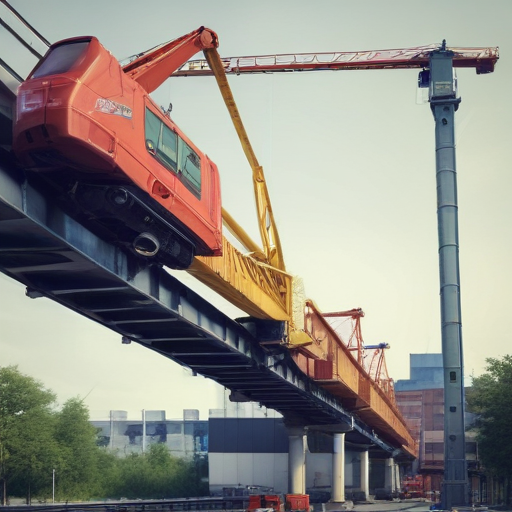
monorail crane Accessories Upgrades and Custom Manufacturing Options
Monorail cranes are integral to many industrial and manufacturing operations, offering efficient and versatile material handling solutions. Various accessories, upgrades, and custom manufacturing options can significantly enhance their functionality and performance.
Accessories:
1. Lifting Attachments: Specialized hooks, magnets, and vacuum lifters for handling different types of loads.
2. End Trucks and Drives: High-quality end trucks and motorized drives to enhance movement efficiency along the monorail.
3. Control Systems: Advanced radio remote controls, pendant controls, and automated systems for improved precision and safety.
4. Safety Features: Load limiters, anti-collision systems, and audible/visual alarms to ensure operational safety.
5. Electrification Systems: Festoon systems, conductor bars, and cable reels for seamless power supply.
Upgrades:
1. Capacity Enhancement: Increasing load capacity through reinforced beams and upgraded hoisting mechanisms.
2. Speed Improvement: Upgrading to higher speed motors and variable frequency drives for faster material handling.
3. Ergonomic Enhancements: Adding cushioned control stations or anti-fatigue mats to improve operator comfort and efficiency.
4. Integration with IoT: Implementing smart technologies for real-time monitoring, diagnostics, and predictive maintenance.
Custom Manufacturing Options:
1. Tailored Design: Engineering the crane to fit unique spatial constraints or specific operational requirements.
2. Material Selection: Utilizing specialized materials such as stainless steel or corrosion-resistant coatings for demanding environments.
3. Specific Load Handling: Designing custom jibs, gantries, or trolleys to cater to unique load shapes and sizes.
4. Color Coding and Branding: Customizing the crane’s appearance to match company colors or branding requirements.
Choosing the right combination of accessories, upgrades, and custom options can optimize the performance and longevity of a monorail crane, making it a pivotal asset in streamlined operations and productivity.
List Quality Control and The Manufacturing Process of “monorail crane”
Quality Control of Monorail Cranes
1. Material Inspection: Raw materials (steel, alloys) are checked for purity, strength, and compliance with specifications.
2. Dimensional Accuracy: Components are measured for precise dimensions to ensure they fit together seamlessly.
3. Welding Quality: Non-destructive testing (NDT), such as ultrasonic and radiographic inspections, verify the integrity of welds.
4. Load Testing: Cranes undergo load tests to validate their lifting capacity and ensure safety under operational conditions.
5. Electrical Systems Check: Wiring, control systems, and motors are tested for functionality and safety, with adherence to electrical codes.
6. Paint and Coating Inspection: Surface treatments are inspected for uniformity, adherence, and protection against corrosion.
7. Functional Testing: Full operational checks, including lifting, lowering, and traveling mechanisms, ensure that the crane performs its intended tasks reliably.
8. Documentation and Certification: Comprehensive records are maintained, and cranes are certified by regulatory bodies for compliance with industry standards.
Manufacturing Process of Monorail Cranes
1. Design and Planning: Engineers draft initial designs using CAD software, focusing on load capacities, dimensions, and material selection.
2. Procurement: High-quality raw materials and components such as beams, motors, and control systems are sourced from trusted suppliers.
3. Fabrication: Structural components (beams, rails) are cut, shaped, and machined to precise specifications.
4. Welding and Assembly: Parts are welded together using automated or manual techniques, then assembled into sub-units like end trucks and trolleys.
5. Machining: Critical components such as gears and pulleys are machined for high accuracy and durability.
6. Electrical Assembly: Electrical components, including control panels and wiring, are installed and rigorously tested.
7. Surface Treatment: Assembled units are sandblasted and coated with rust-resistant paint.
8. Final Assembly and Testing: The crane is fully assembled, followed by functional and load testing to ensure compliance with specifications.
9. Quality Assurance: Inspections and quality checks are conducted at various stages to ensure adherence to design and safety standards.
10. Packaging and Shipping: Completed cranes are carefully packaged and prepared for safe transportation to the customer.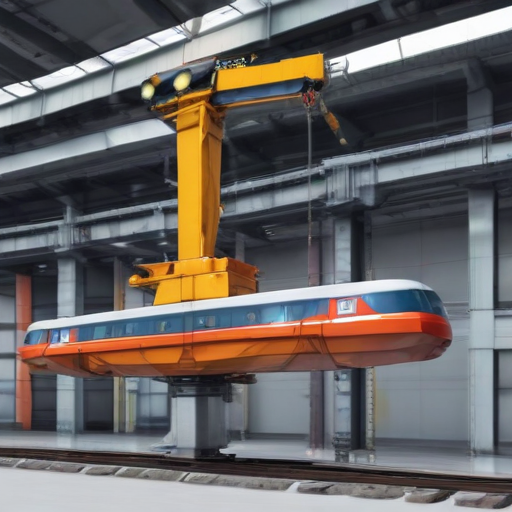
How to use “monorail crane”
A monorail crane is a type of overhead lifting device typically used in industrial settings for transporting materials along a predetermined path. Here’s a concise guide on how to use it:
1. Familiarization and Safety Check:
– Read the Manual: Thoroughly read the manufacturer’s manual to understand specific operational instructions and safety guidelines.
– Inspect the Crane: Perform a visual inspection to ensure all components are in good working condition. Check for any signs of wear, damage, or malfunction.
2. Prepare the Load:
– Secure the Load: Use appropriate slings, chains, or lifting devices to secure the load. Ensure the weight is within the crane’s rated capacity.
– Balanced Load: Confirm the load is balanced to prevent swinging or tipping during movement.
3. Operate the Crane:
– Power On: Turn on the crane’s power source.
– Controls: Use the control pendant or remote control to operate the crane. Familiarize yourself with the functions of each button (e.g., up, down, left, right).
– Lifting: Slowly lift the load a few inches to check stability. Ensure the path is clear of obstructions and personnel.
– Movement: Guide the crane along the monorail track to the desired location. Move slowly and steadily to avoid sudden movements.
4. Positioning and Lowering the Load:
– Final Check: Confirm the destination area is safe for unloading.
– Lower Gently: Gradually lower the load to the floor or platform, ensuring a controlled descent.
– Unload: Once the load is stable, detach the lifting devices carefully.
5. Power Off and Maintenance:
– Turn Off: Switch off the crane’s power.
– Store Controls: Place the control pendant or remote in a safe location.
– Routine Maintenance: Schedule regular maintenance checks to ensure ongoing safe operation.
Always adhere strictly to safety protocols and training guidelines to prevent accidents and ensure efficient operation.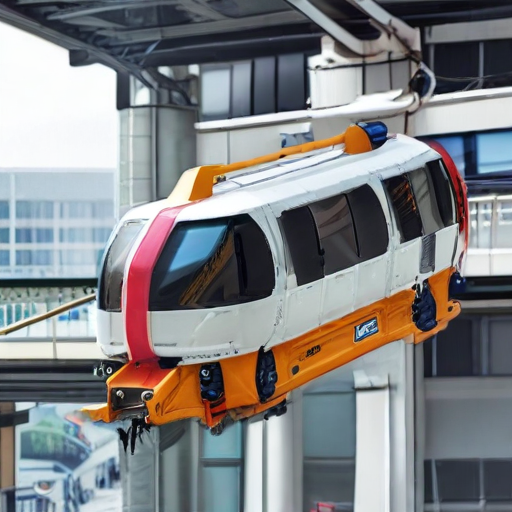
“monorail crane” Comparative Analysis
A monorail crane is a type of material handling equipment designed for repetitive and linear overhead lifting tasks. This analysis examines its application, advantages, and limitations compared to other common cranes like gantry, bridge, and jib cranes.
Monorail Crane
#### Applications
Monorail cranes are typically used in fixed, linear paths within a production environment, making them ideal for assembly lines, manufacturing floors, and warehousing where materials need to be transported from one point to another in a straight line.
#### Advantages
1. Space Efficiency: Monorail cranes require minimal installation space compared to gantry or bridge cranes.
2. Cost-Effective: Lower installation and maintenance costs due to simpler structural requirements.
3. Customized Paths: Can be tailored to the specific layout of a workspace, offering flexibility.
4. Ease of Operation: Generally simpler to operate, making them ideal for straightforward tasks.
#### Limitations
1. Limited Mobility: Restricted to a single linear path, which can be a drawback for workplaces requiring three-dimensional movement.
2. Loading Capacity: Typically less robust than bridge or gantry cranes, making them less suitable for very heavy loads.
Comparative Analysis
#### Gantry Cranes
Gantry cranes offer greater mobility and can move heavy loads across large areas, making them ideal for shipyards or outdoor applications. However, they require more space and have higher installation costs.
#### Bridge Cranes
Bridge cranes provide extensive coverage of a workspace by supporting three-dimensional movement. They are suitable for heavy and bulky materials but necessitate significant overhead structures and maintenance.
#### Jib Cranes
Jib cranes provide localized lifting capabilities and rotational movement, useful for loading and unloading operations within a smaller radius. However, their range is limited compared to monorail and bridge cranes.
Conclusion
Monorail cranes are best suited for specific, linear lifting tasks within confined spaces, offering a cost-effective and straightforward solution. However, for versatile, heavy-duty, or wide-range operations, gantry, bridge, or jib cranes may be more appropriate.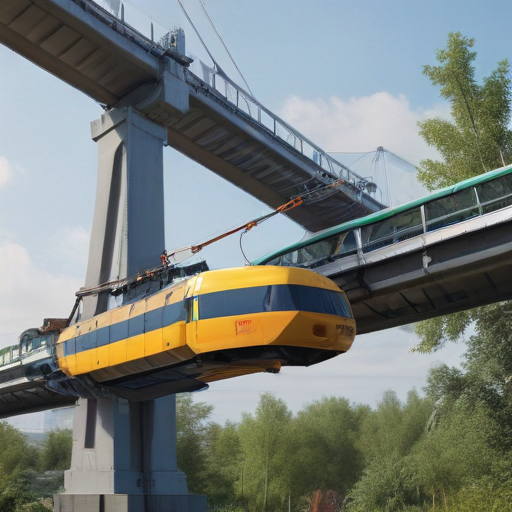
“monorail crane” Warranty and Support
When purchasing a monorail crane, understanding its warranty and support options is crucial for peace of mind and long-term reliability. Typically, monorail cranes come with a manufacturer’s warranty that covers defects in materials and workmanship. This warranty period usually ranges from one to five years, depending on the manufacturer. It’s essential to review the warranty terms carefully to understand what components are covered and any conditions that may void the warranty, such as improper use or unauthorized repairs.
Support for monorail cranes often includes technical assistance, regular maintenance services, and parts replacement. Many manufacturers offer comprehensive support packages that include 24/7 customer service access, on-site inspections, and emergency repair services. Regular maintenance contracts can further extend the life of your crane and ensure it operates efficiently and safely.
Extended warranties may also be available for purchase, providing additional coverage beyond the standard warranty period. These can be beneficial if you anticipate heavy usage or challenging operating conditions.
Before finalizing your purchase, consider the reputation of the manufacturer’s after-sales service. Strong support can significantly reduce downtime and keep your operations running smoothly. Always verify the availability of spare parts and the response time for service calls.
In summary, carefully review and understand the warranty and support options when purchasing a monorail crane to ensure longevity, efficiency, and rapid problem resolution.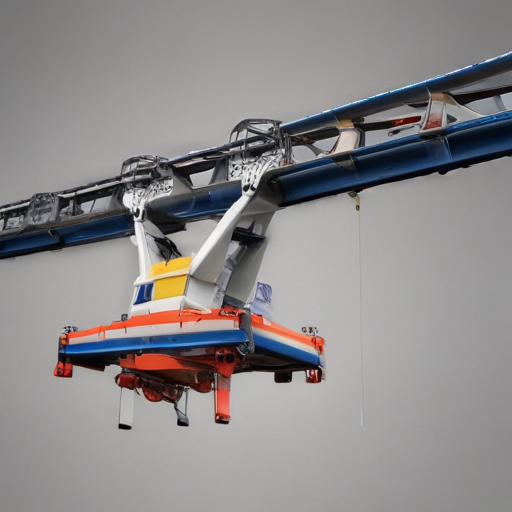
List “monorail crane” FAQ
Certainly! Here is a FAQ list for a monorail crane:
Monorail Crane FAQ
1. What is a Monorail Crane?
– A monorail crane is a type of overhead lifting system that consists of a single rail or beam from which the hoist and trolley move. It is primarily used for material handling in various industrial settings.
2. Where are Monorail Cranes Used?
– They are used in manufacturing plants, warehouses, automotive assembly lines, and any facility where materials need to be transported along a fixed path.
3. What are the Advantages of a Monorail Crane?
– Space-saving design, efficient material handling, increased safety, scalability, and the ability to move loads around obstacles.
4. What Types of Loads can Monorail Cranes Handle?
– They can handle a variety of loads ranging from light to heavy, depending on the capacity of the crane system.
5. Do Monorail Cranes Come in Standard Sizes?
– Monorail cranes can be customized to suit specific applications and spaces, although standard models are available.
6. What Maintenance is Required?
– Regular inspection and cleaning of the rail, inspection of the hoist and trolley, lubrication of moving parts, and periodic safety tests.
7. How is a Monorail Crane Operated?
– They can be operated manually or with powered controls such as a pendant, radio remote control, or an automated system.
8. What Safety Features are Included?
– Safety features can include emergency stop buttons, limit switches, overload protection, and anti-collision systems.
9. Can a Monorail Crane be Integrated with Other Systems?
– Yes, it can be integrated with conveyor systems, robotic arms, and other automated material handling systems.
10. What Factors Should be Considered Before Installation?
– Consider load capacity, length of the rail, workspace layout, electrical requirements, and compliance with safety regulations.
11. How Long Does Installation Take?
– Installation time varies depending on the complexity and size of the system, but it generally ranges from a few days to a couple of weeks.
12. What is the Cost of a Monorail Crane?
– Costs vary based on specifications, capacity, and customization but generally range from a few thousand to several hundred thousand dollars.
This FAQ should provide a concise overview of monorail cranes, addressing common questions and key considerations.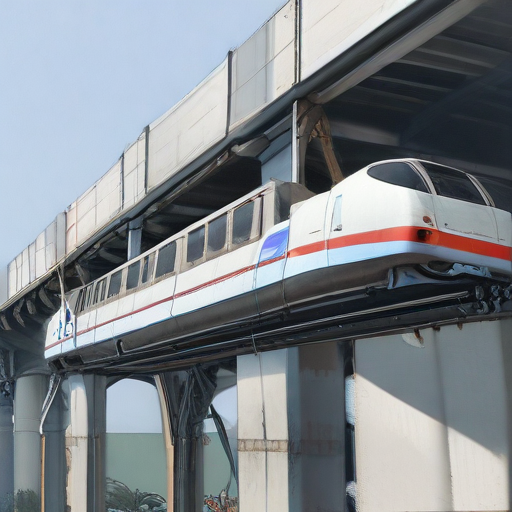
Top 10 FAQ with answer about monorail crane for Buyer Sourcing from China
Sure, here are the top 10 frequently asked questions (FAQs) about sourcing monorail cranes from China along with their concise answers:
1. What is a monorail crane?
– A monorail crane is a type of lifting equipment that travels along a single beam or track, enabling the movement of loads along a fixed path, ideal for repetitive tasks in a confined area.
2. Why should I source monorail cranes from China?
– China offers competitive prices, a wide range of options, advanced manufacturing technology, and extensive experience in exporting industrial equipment worldwide.
3. How do I ensure the quality of monorail cranes from China?
– Verify the supplier’s certifications (ISO, CE), request product samples, conduct factory audits, and check past client references.
4. What is the typical lead time for monorail cranes from China?
– Lead times can vary, but typically they range from 30 to 60 days, depending on customization, order size, and current production schedules.
5. Are there specific standards or certifications needed for monorail cranes?
– Yes, monorail cranes should meet industry standards such as ISO, CE, and ANSI. Ensuring compliance with local safety and operational regulations is also essential.
6. Can I customize a monorail crane according to my specific requirements?
– Most Chinese manufacturers offer customization options including load capacity, track length, lifting height, and additional features like remote control systems.
7. What are typical payment terms for sourcing from China?
– Common payment terms include a 30% deposit upon order confirmation and the remaining 70% before shipment. Alternatively, letters of credit (LC) are also accepted.
8. What shipping options are available when ordering from China?
– Shipping options include sea freight, air freight, and express courier services. Sea freight is the most economical for large and heavy equipment like cranes.
9. How do I handle maintenance and spare parts for monorail cranes from China?
– Ensure the supplier provides a detailed maintenance manual, and verify the availability of spare parts and after-sales support. Establish a clear warranty policy.
10. What should I look for in a reliable supplier?
– Look for established manufacturers with positive reviews, comprehensive after-sales support, transparent communication, and a history of exporting to your region.
These succinct answers should help buyers navigate the process of sourcing monorail cranes from China effectively.

